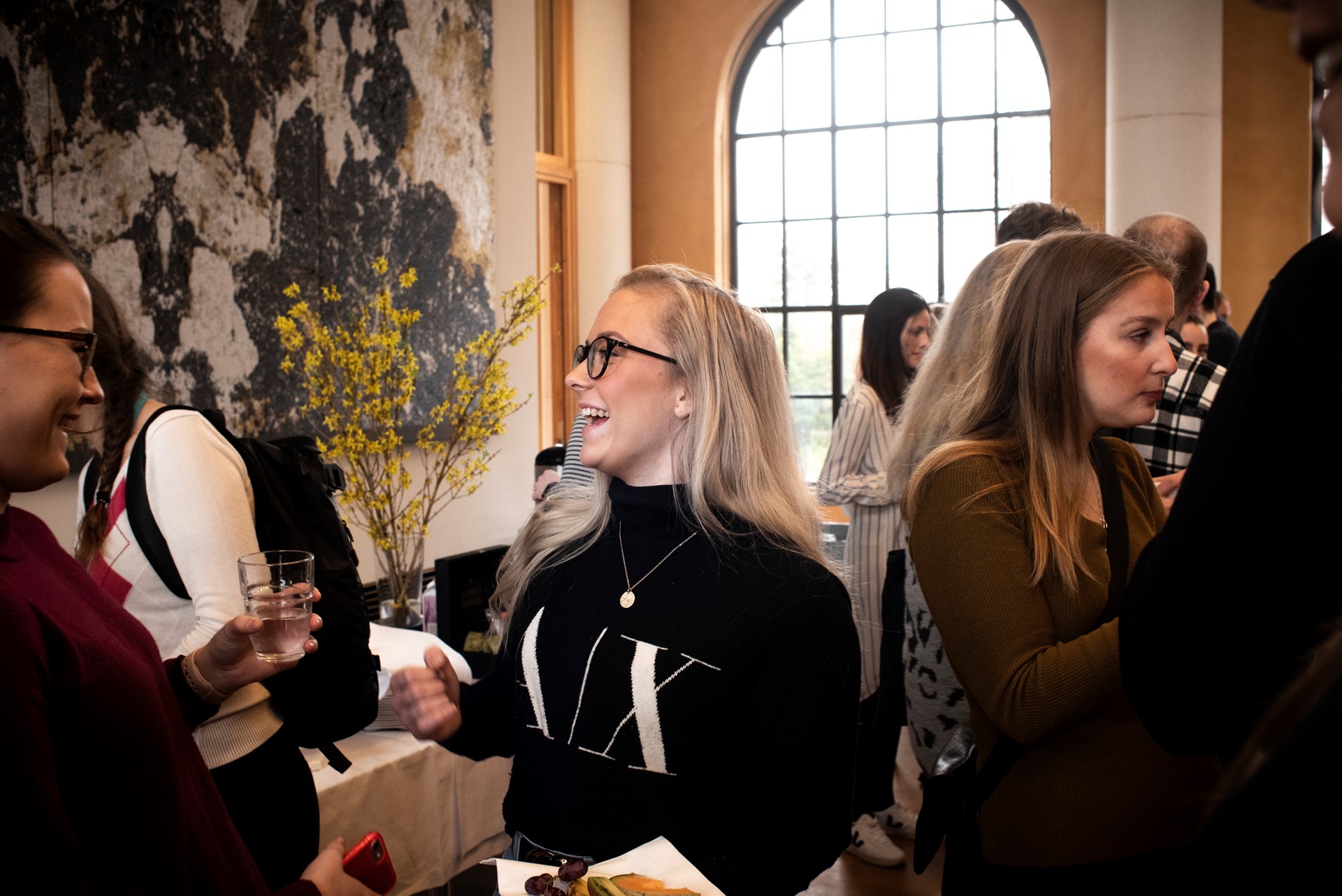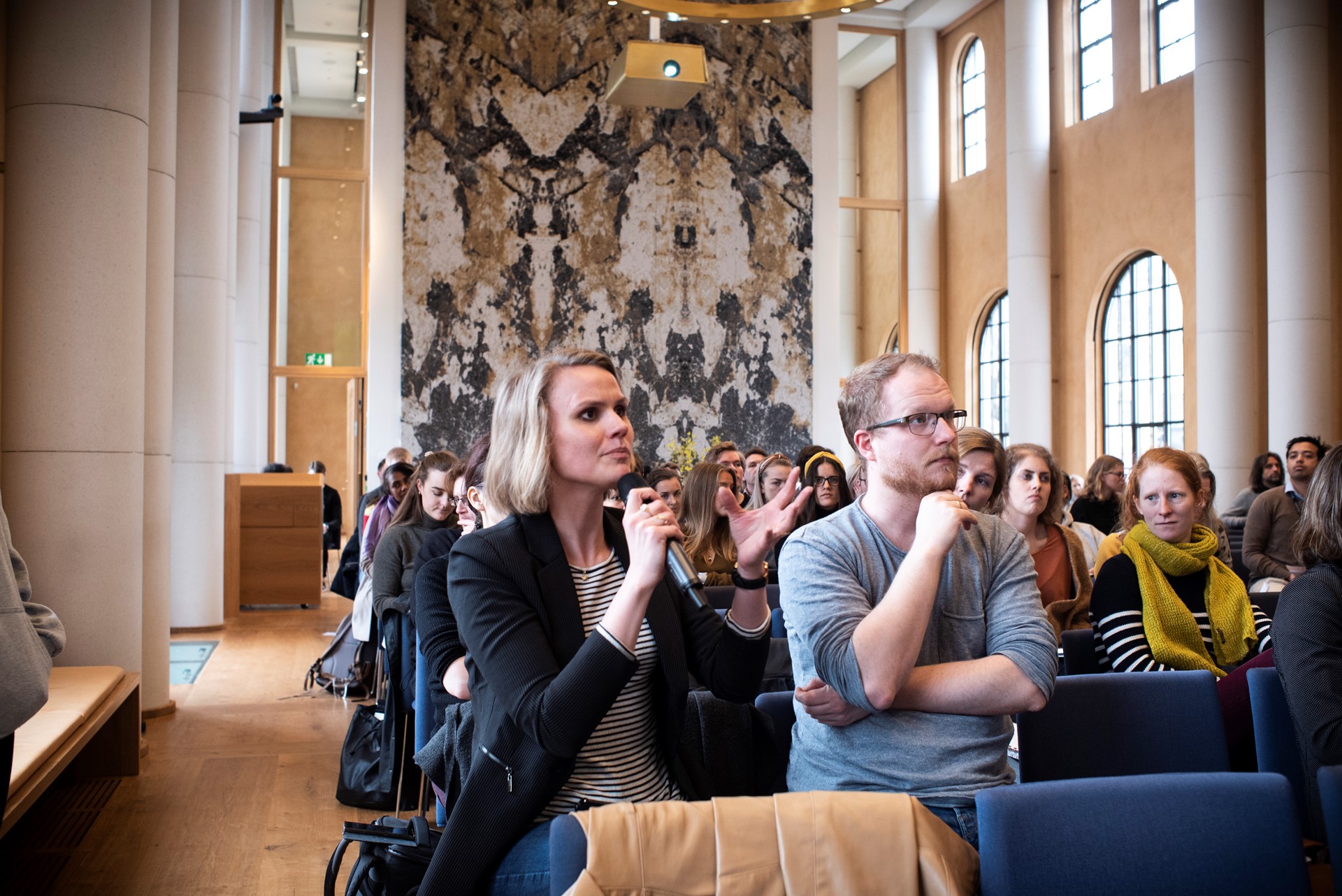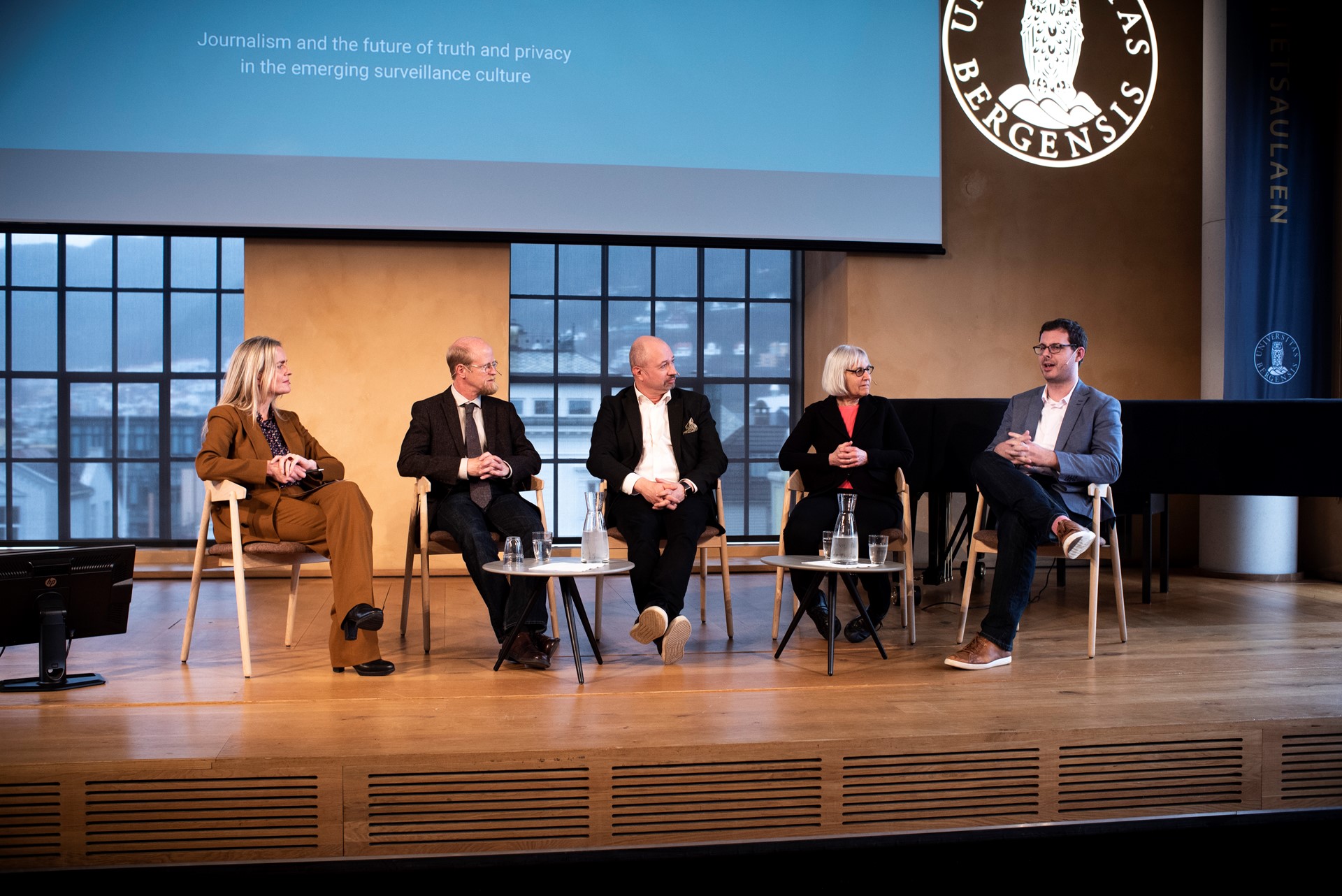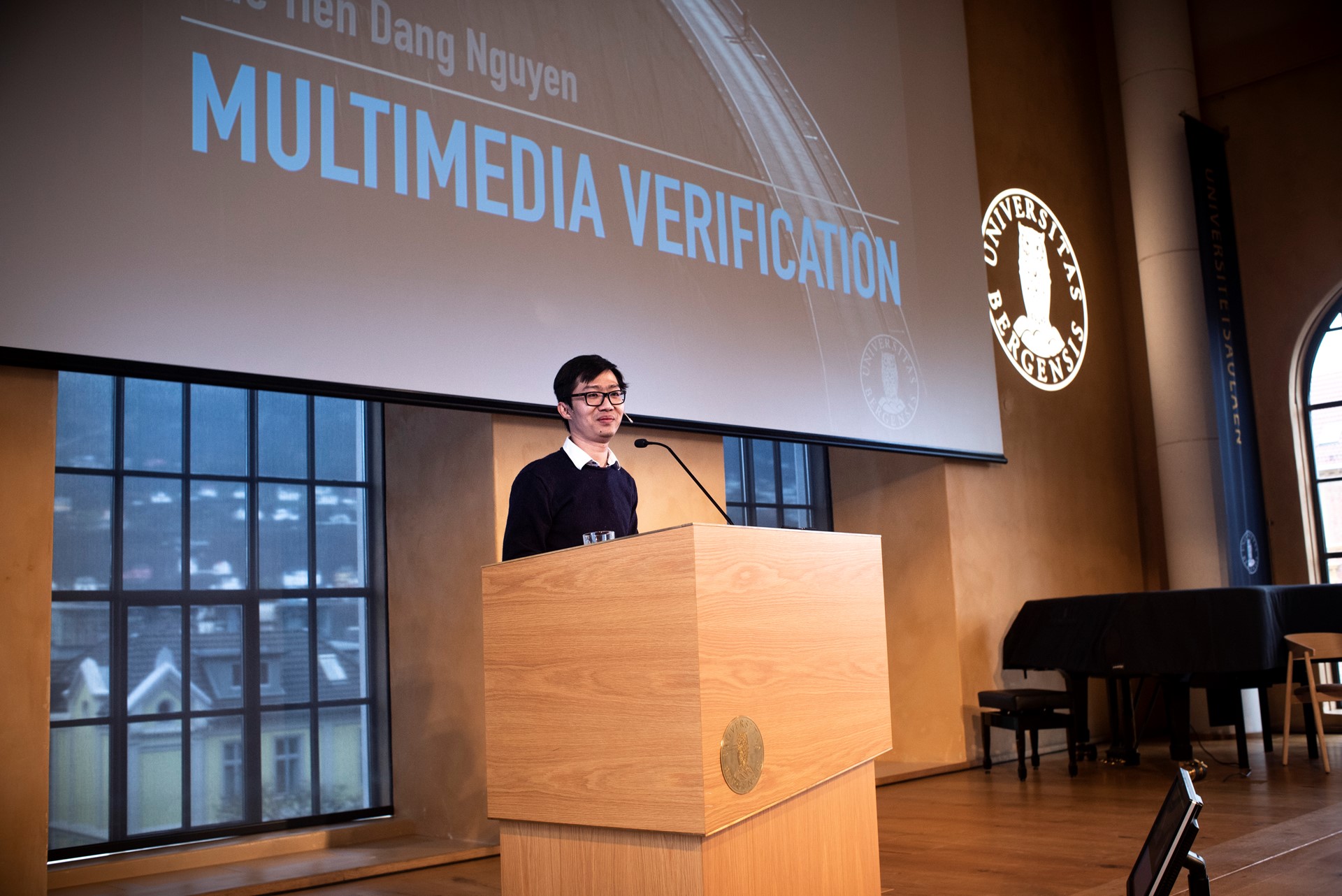Visual transparency in the media was the theme for this year's ViSmedia conference, where expert presenters approached transparency and truth in the media from a multitude of angles. The conference is co-organized by ViSmedia, NCE Media and Media City Bergen, and is part of the interdisciplinary ViSmedia project, which is funded by the Norwegian Research Council. ViSmedia seeks to investigate adoption of new visual technology in news media and how this can be done in ways that serves democracy and society as a whole.
The street lights that suddenly start watching you
Not long ago, we were invisible when offline, at least when we were just walking around. German radio documentary author and producer, Nora Bauer, came to the ViSmedia conference to talk about how we are now tracked and monitored by street lights.
- One day I was out walking in my home-town, Cologne, and I saw this sign at the end of a street: "You are now entering the smart zone." My alarm bells started going off.
- I wanted to make a radio documentary about this, so I started looking into what else you can do with these smart LED-lights. And I found out, that today, there are four billion LED street lights around the world. In Cologne all our street lights are now LEDs, fitted with sensors and a SIM card, for real-time relay of data. These sensors can read just about anything. From environmental data, to info about human and car movement. They can even read your number plate, or see if there are any available parking spots nearby, Bauer explains.
- You can build an amazing network with these connected, intelligent sensors. And with the street lights, the infrastructure is already in place. Then you consolidate the various data, run it through an intelligent software. And suddenly you can feed live alerts directly to the police, saying: "Hey, it looks like someone is shooting on that street.” In order to do this, you need sensors that are intelligent, and with situational awareness. You don’t need any CCTV-cameras, you just need a network of intelligent sensors, she adds.
- And we, the citizens become part of the data network without knowing it. Just by walking around in the streets. If you sign into the free Wi-Fi that comes with this network, your identity is revealed.
 Networking in between talks. This year's ViSmedia saw an attendance of some 160 individuals, both from academia, media and the local business community. (Photo: Hedvig Idås)
Networking in between talks. This year's ViSmedia saw an attendance of some 160 individuals, both from academia, media and the local business community. (Photo: Hedvig Idås)
Intelligent technology in our private sphere
Intelligent tech is not just seen as the big, bad wolf lurking in the background. According to Professor Deborah G. Johnson, we actively seek it out. Johnson works at the University of Virginia and was in Bergen to talk about the emerging field of intelligent sex robots.
- What do these sex robots have to do with transparency? She asks.
- It has everything to do with transparency. This is something that in the future can lead us or trick us into believe that we are having a genuine, reciprocal relationship with a human-like figure. In fact, we can trick ourselves, and become fully convinced. This endeavor is all about having people believe they are interacting with a human. When, we in fact are just interacting with very advanced technology, she concludes.
 Professor Deborah G. Johnson from the University of Virginia, talking about human-robot interaction. (Photo: Hedvig Idås)
Professor Deborah G. Johnson from the University of Virginia, talking about human-robot interaction. (Photo: Hedvig Idås)
After listening to the talks, attendees at the ViSmedia Conference 2019 can be forgiven for thinking we have taken tech too far.
- It was scary to learn about the visual surveillance. These are very powerful tools, says Sunju Park, one of the conference attendees.
- I have been warned about online surveillance, how Google and Facebook gather our data. But I think 99 percent of my friends never think about this. It was good to come here and gain awareness as a consumer, she adds. 
Audience members were encouraged to participate and ask questions to the speakers. (Photo: Hedvig Idås)
The positive impact of new surveillance technology
- Satellites with cameras hover over our heads, undetected. Of course, it feels imposing, says Turo Uskali, researcher at the University of Jyväslylä.
In his talk, he sheds light on how new, powerful satellites can be used to aid storytelling in journalism.
- New surveillance technology can give us access to information that would otherwise be invisible. Satellites can be our eyes in dangerous areas, like the recent volcano eruption in Hawaii where they provided good footage from above while keeping all reporters and photographers out of danger, he explains.
 Turo Uskali from the University of Jyväskylä talking about how satellites and drones can be used as powerful storytelling-tools. (Photo: Hedvig Idås)
Turo Uskali from the University of Jyväskylä talking about how satellites and drones can be used as powerful storytelling-tools. (Photo: Hedvig Idås)
- There is a Silicon Valley-based company that has developed small camera-satellites, currently in use by major global outlets like the BBC, Financial Times and NYT. In fact, new surveillance technology has been central in telling and exposing major global stories that would not have been told otherwise, he says.
- In the story about the ill-fated MH17 flight, it was satellite images that proved Russian separatist groups were using BUK-missiles to down this passenger plane over Ukraine. And thanks to satellites, we can see and report what is happening inside North Korea, a country that would otherwise be out of bounds, he explains.
In his talk, Uskali demonstrates how powerful aerial photography can be when used as a story telling tool. He is showing Reuters' story 'Life in the camps', where drone and satellite footage is used to communicate the magnitude of the Rohingya crisis and the vast size of the refugee camps on the Myanmar-Bangladesh border. The result is very emotional and impactful.
- But there are ethical and privacy concerns that need to be ironed out, Uskali admits.
- In five to ten years, we can most likely get live video feeds from satellites. Today, there are no warning signs on the ground that you may be photographed from space. And there is very little public awareness and education about this issue. We might have to do something about that, he concludes.
 Professor Paul C. Adams came to the ViSmedia Conference to talk about online surveillance. (Photo: Hedvig Idås)
Professor Paul C. Adams came to the ViSmedia Conference to talk about online surveillance. (Photo: Hedvig Idås)
 Panel debate: Left to right - Moderator Hilde Sandvik, Paul C. Adams, Turo Uskali, Deborah G. Johnson, and Nichlas Diakopoulos from the Northwestern University (US). (Photo: Hedvig Idås)
Panel debate: Left to right - Moderator Hilde Sandvik, Paul C. Adams, Turo Uskali, Deborah G. Johnson, and Nichlas Diakopoulos from the Northwestern University (US). (Photo: Hedvig Idås)
 Duc Tien Dang Nguyen, researcher at UiB, teaching the audience how to spot a fake photo in the news. (Photo: Hedvig Idås)
Duc Tien Dang Nguyen, researcher at UiB, teaching the audience how to spot a fake photo in the news. (Photo: Hedvig Idås)
Written by Hilde Gudvangen
